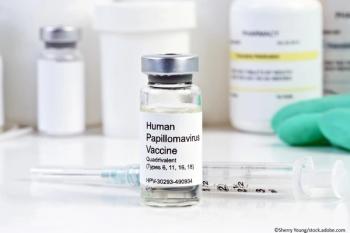
Radiologists caution against CT misuse in swine flu diagnosis
Imaging experts are lining up to caution physicians not to read too much into study findings suggesting that chest CT is better than general radiography for examining A-H1N1 flu patients.
Imaging experts are lining up to caution physicians not to read too much into study findings suggesting that chest CT is better than general radiography for examining A-H1N1 flu patients.
They say CT can complement the diagnosis and management of patients with the swine flu, but it should never be considered as a first-line diagnostic test for the disease, especially in pediatric patients.
Evidence regarding the benefits of CT scanning in cases of patients affected by the A-H1N1 flu virus continues to pile up. Findings of a study by investigators in Canada, the latest addition to the clinical literature, suggest CT might be better than the standard chest x-ray to show the extent and characterization of the disease. The retrospective review of seven cases led to the conclusion that CT could help physicians with the prospective diagnosis of H1N1, said principal investigator Dr. Amr M. Ajlan, a radiologist at the Vancouver General Hospital in British Columbia.
"Most cases of H1N1 are mild and self-limited. However, high-risk patients are more likely to have severe complications. Our study suggests that CT is superior to standard chest x-rays and should be the imaging modality of choice in high-risk patients," Ajlan said.
The study appeared online Oct. 21 in the American Journal of Roentgenology.
Just as the evidence of CT benefits for victims of the pandemic grows, so does caution among imagers. Young children and adolescents are among the populations at highest risk for swine flu. Because of the radiation doses involved, any new large-scale application of CT scans needs to be carefully evaluated, said David J. Brenner, Ph.D., a professor of radiation biophysics at Columbia University.
"This is particularly true if children are potential subjects," Brenner told Diagnostic Imaging.
While the study is interesting, the numbers are too small to be able to draw conclusions about the overall utility of CT scans in an influenza pandemic scenario, particularly as earlier studies had not found a link between influenza and pulmonary embolism, Brenner said. In this context, CT appears to be an appropriate imaging technique for critically ill H1N1 patients, but not as a mass screening tool, he said.
According to Dr. Donald P. Frush, chief of pediatric radiology at Duke University, CT should be used only as an adjunctive management tool. CT has a recognized role in assessing lungs when other modalities, such as chest x-ray, do not give sufficient information. CT should be included in all of the diagnostic and management protocols, such as clinical and lab tests. But, particularly in children, it should never be a front-line diagnostic exam, he said.
"We've had a number of children here with it and some have not done well at all, but we haven't got CTs on any of these kids," he said.
Newsletter
Enhance your clinical practice with the Patient Care newsletter, offering the latest evidence-based guidelines, diagnostic insights, and treatment strategies for primary care physicians.















































































































































































































































































